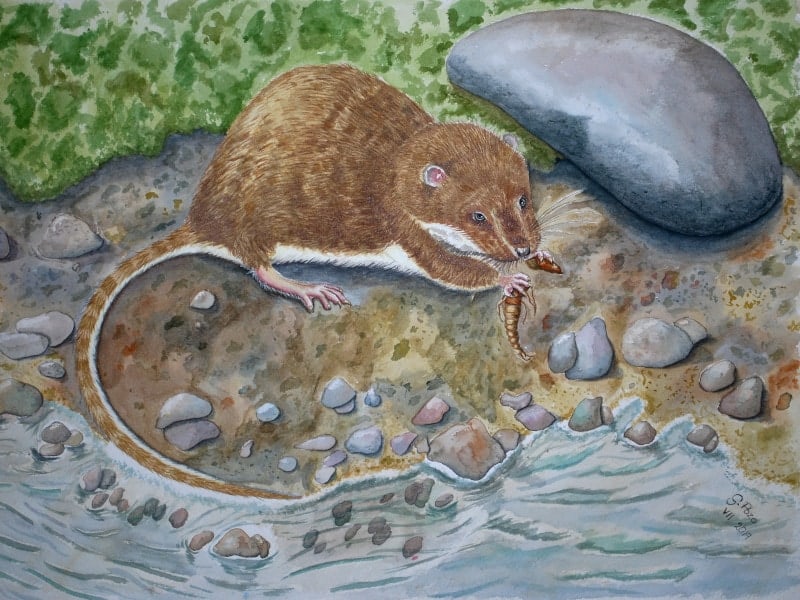Scientists discover a new crab-eating rat species in Ecuador
The rediscovery of two museum specimens in Azuay, Ecuador encouraged researchers to investigate whether the small rodents actually represented a new species of crab-eating rat (Ichthyomys). To find out, they compared the specimens with others of the same genus that are preserved in mammal collections around the world.
By Jorge Brito
A team of researchers from Ecuador and Argentina recently described a new highland species of small crab-eating rat based on two museum specimens, collected in 1990 in the Río León and housed at the Museo Universidad del Azuay in Ecuador.
Crab-eating rats (species of the genus Ichthyomys) live mostly solitary in the vicinity of aquatic habitats. Some species are active during the day, others at night. They have thick whiskers that help them detect prey in the water. Their legs are large with a fringe of rigid hairs that help them move through the water. Crab-eating rats feed on fish, crabs, shrimp, aquatic insect larvae, water cockroaches and isopods.
The new species was named Ichthyomys pinei in honor of the mammalogy student Ronald Pine. It is distinguishable from another, similar Ecuadorean crab-eating rat, Ichthyomys hydrobates, by its smaller size, bicolored tail, broad and heavily fringed hindfeet, as well as characteristics of its skull and teeth.

The new species occurs in the western Andes in southern Ecuador and is allopatric with Ichthyomys stolzmanni (also known as Stolzmann’s crab-eating rat). This means that the new species arose due to the geographical separation and reproductive isolation of a population of Ichthyomys stolzmanni. Stolzmann’s crab-eating rat also has a bicolored tail but is larger.
The authors of the article that describes the new species, published in Mammalia, state that the current conservation status of Ichthyomys pinei should be listed as “data deficient”. Although the researchers visited the Río León with traps baited with oats, peanut butter, tuna and vanilla, no live specimens were caught. They note that the type locality, as well as several other portions of the Río León, are included in gold mining projects. The potential negative impacts of the mining should be monitored carefully, particularly taking into account that deforestation and water pollution could be critical in regard to the persistence of this species.
Ecuador has the greatest diversity of crab-eating rodents. With the description of Ichthyomys pinei, the number of Ecuadorean Ichthyomys species increases to four. The authors state that the rich biodiversity of this region mandates the establishment of rational and comprehensive programs of inventory and collection, as well as improved access to these resources for students. “These programs should not be delayed, especially considering the rapid rate of conversion of natural habitats and ecosystems to human-modified environments”, the researchers say.
To find out more, read the original article here: